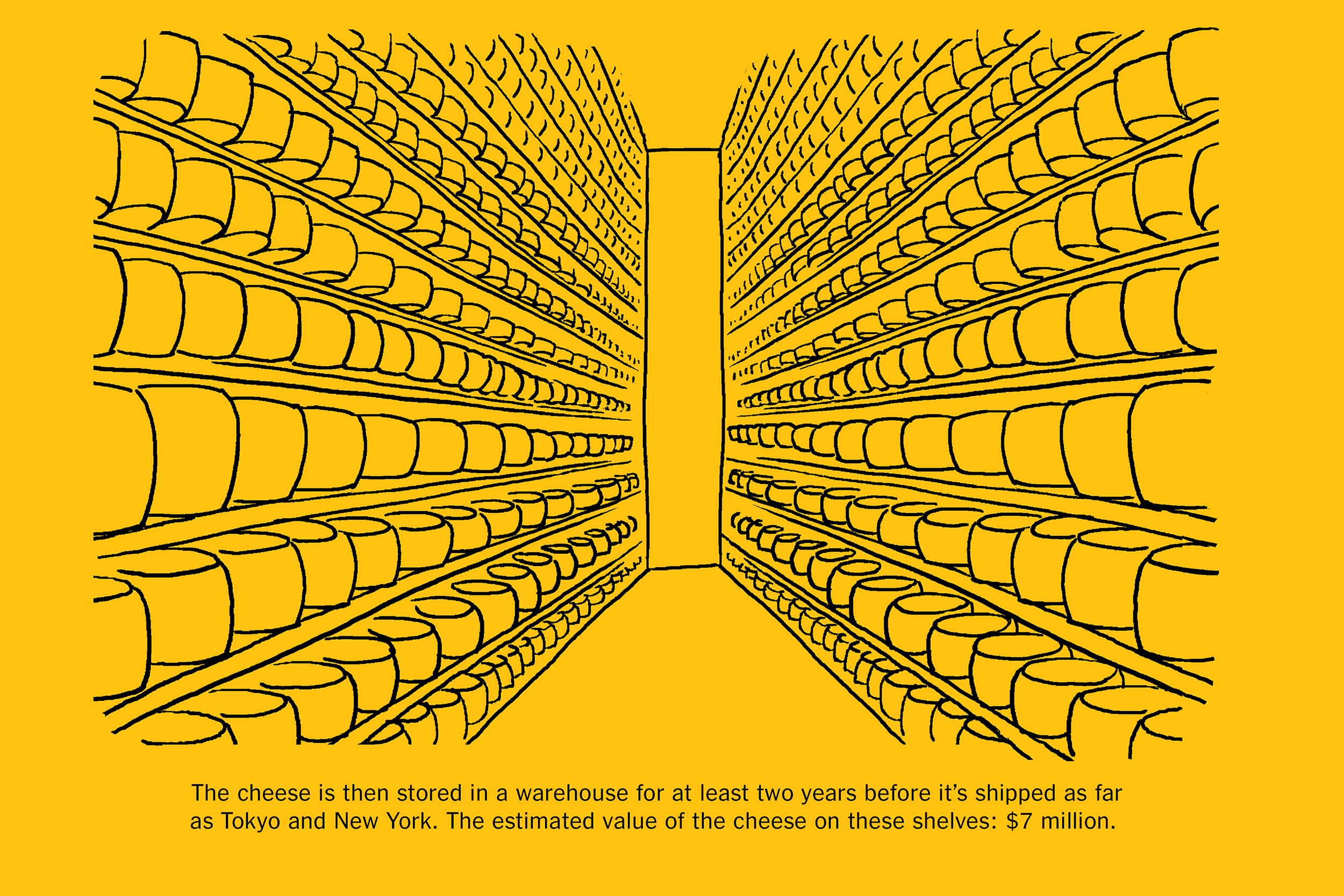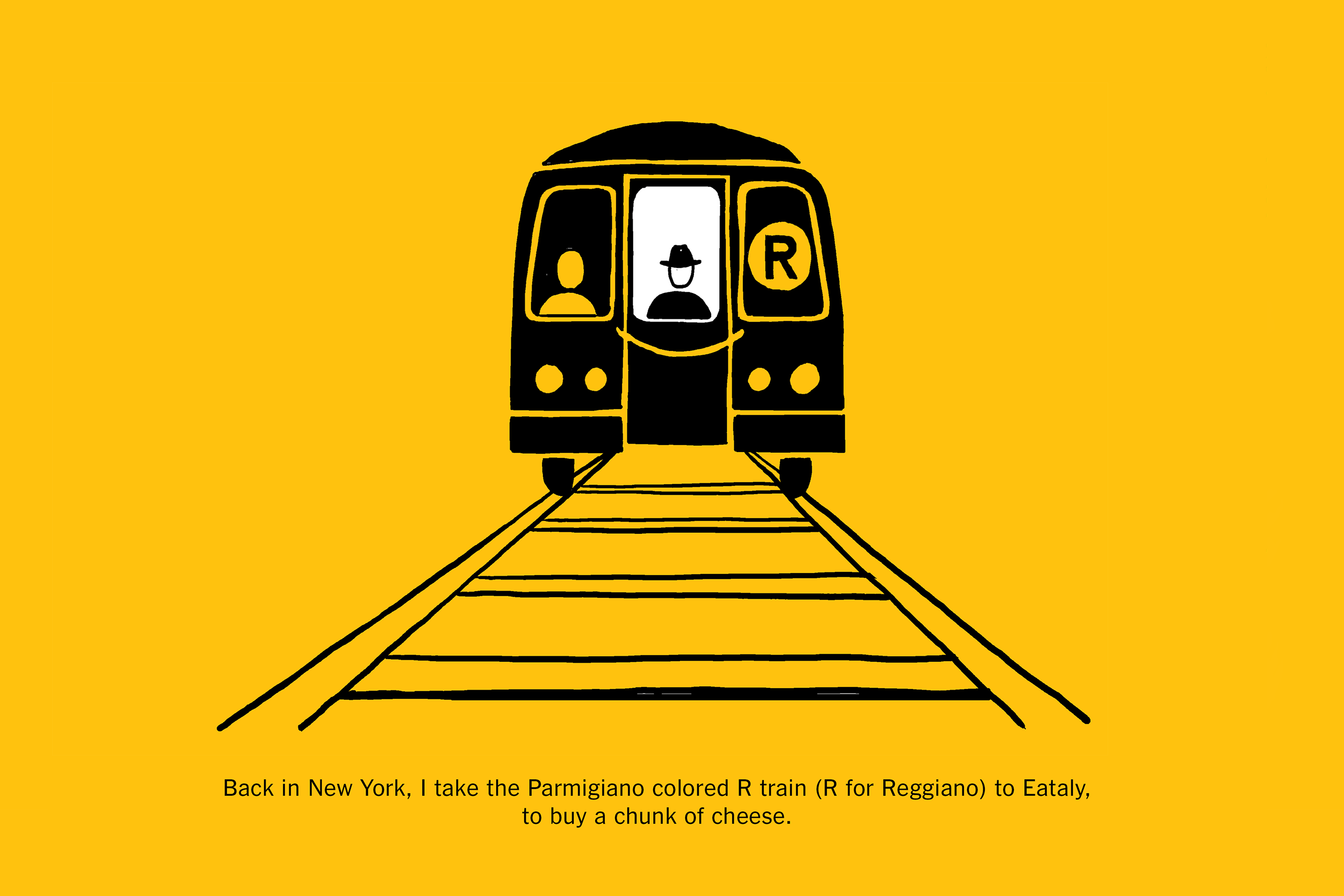Food Chains
Food Chains looks behind the scenes at our food industry, emphasizing not only the origins but also the politics and fraud of food production. Using information graphics and on-the-scene sketching, Blechman travels to the world’s biggest pasta plant, traces the manufacture of olive oil, visits a Parmigiano cheese facility. Published as an interactive piece by The New York Times, the full stories can be read here.
Olive Oil
One of the most lucrative forms of fraud in the food world is adulterated extra virgin olive oil. Easy to doctor and difficult to detect, Extra VIrgin Suicide tells the story of fake olive oil, and how not to be duped. View here.
Parmigiano-Reggiano
The typographic pattern in the rind of Parmigiano Reggiano is more than a decorative element: it helps protect Parmigiano farmers against fraudulent cheese producers. View here.
Planet Pasta
A field trip to the largest spaghetti factory in the world, outside Parma, Italy. The machines work around the clock, pouring spaghetti out at a rate of five tons an hour. View here.
San Marzano Tomatoes
For almost two centuries, farmers near Naples have grown the legendary San Marzano tomatoes. This way of life is now threatened with tomatoes falsely labeled San Marzano, but actually grown in China or New Jersey. View here.






























